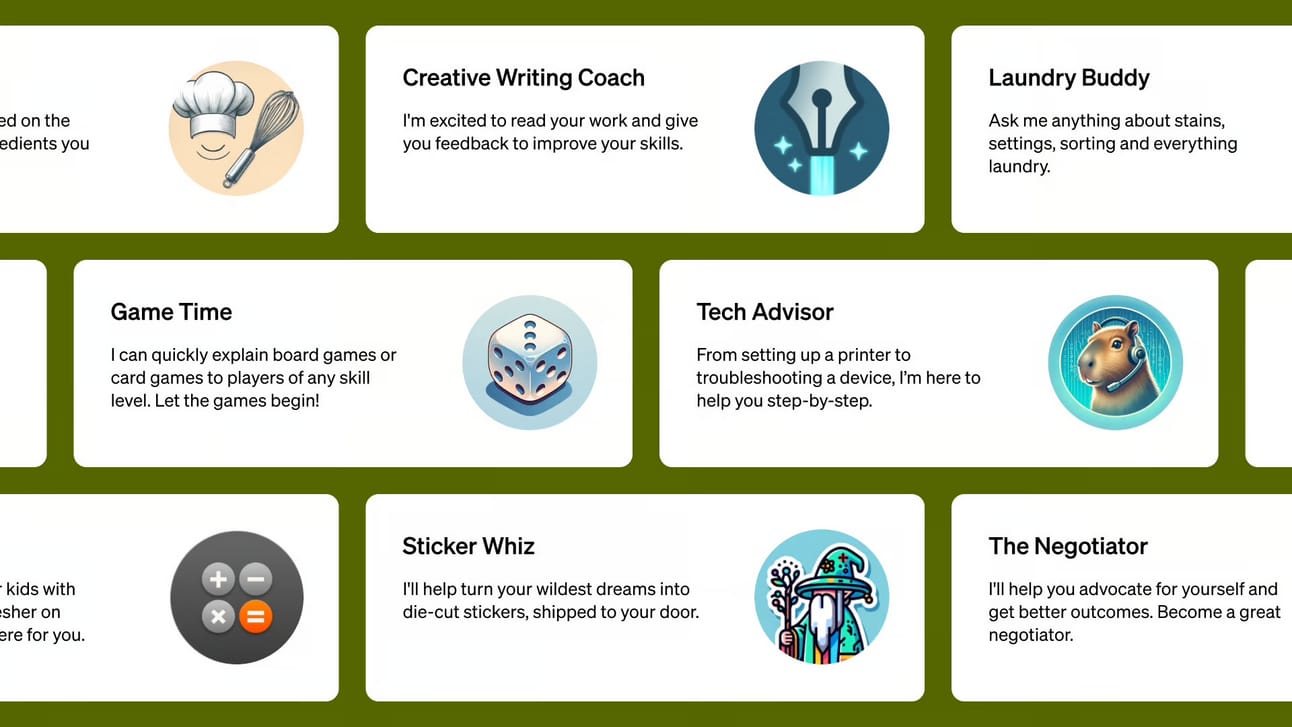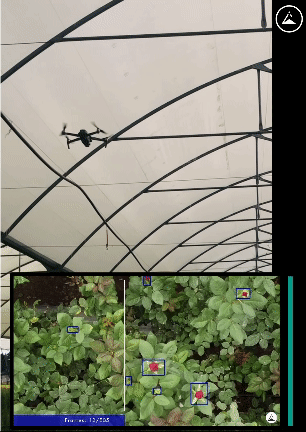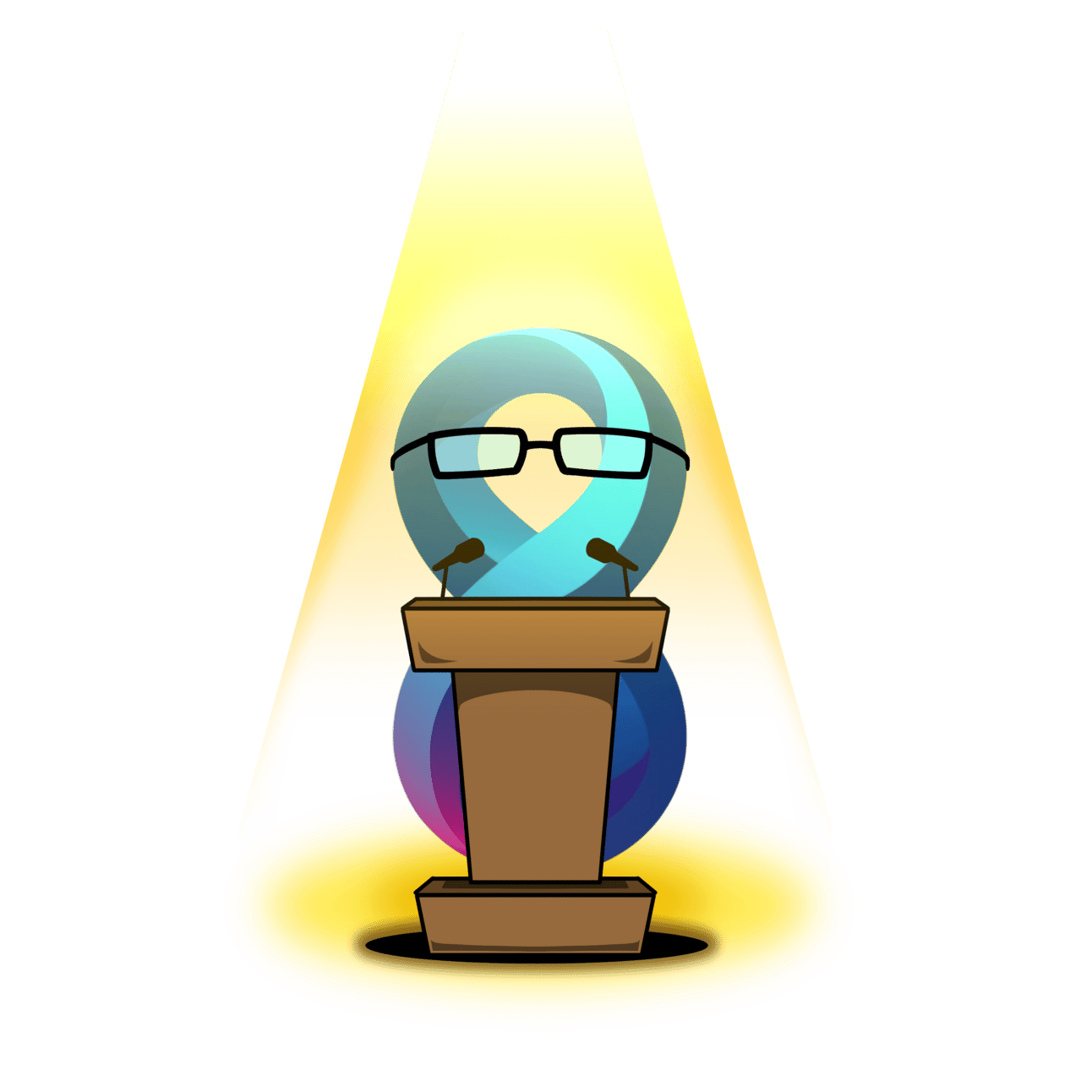
Hello,
Welcome to this edition of Loop! We aim to keep you informed about technology advances, without making you feel overwhelmed.
To kick off your week, we’ve rounded-up the most important technology and AI updates that you should know about.
In this edition, we’ll explore:
- All the announcements from OpenAI’s developer conference
- Humane’s AI Pin, which is powered by GPT-4
- WeWork’s rapid decline from $47 billion to bankruptcy
- … and much more
Let's jump in!

Top Stories
1. Google’s new AI search tool is finally being rolled out [Link]
Search Generative Experience (SGE) is expanding to over 120 countries, following on from the initial launches in the US, India, and Japan. SGE is different to their normal search engine where you’re shown a list of links. Instead, it works similar to Bing Chat - with users shown fully formed answers and the references used. The tool can provide summaries, definitions, image generation, and drafts that were made using AI.
2. Humane launch the AI Pin [Link]
The AI Pin, designed to be worn on clothing, can be interacted with using voice commands or its laser projector. This is a really interesting feature, since the UI can be shown on the palm of your hand. Pin can even integrate with GPT-4, opening up a huge number of possibilities.
It has a Snapdragon processor, 32GB of storage, a 12-megapixel camera, an accelerometer, gyroscope, and several other sensors. It’ll cost $699 to buy, but you’ll need an additional $24 per month subscription - because of the AI features.
Over 100,000 people have shown interest in the device and Humane are planning for it to go on sale next year, so it’ll be interesting to see what it’s like in the flesh (sorry, I couldn’t resist).
3. WeWork files for bankruptcy [Link]
After several difficult years, WeWork has filed for bankruptcy in the US and detailed over $18 billion in debt. It has been a dramatic turn of events, with the company valued at $47 billion just 4 years ago. WeWork’s business model was to sign long-term leases with office developers, divide it up into smaller spaces and then rent these spaces out to other companies. The rental agreements were often on a short-term basis and worked well for startups or companies who are expanding into a new city.
WeWork had a plan for rapid growth, but their long-term rental agreements exposed them to additional risk. When you couple it with the Covid pandemic, an overnight shift to remote working around the world, rising interest rates, and companies slowly returning their employees to the office - WeWork faced the perfect storm.
4. Cruise recalls their entire robotaxi fleet and halts production [Link]
The self-driving company is now starting to lay-off workers, following the controversy over an accident with a pedestrian in October. Authorities in California accused the company of withholding video footage of the incident and have since revoked their permits. For months, Cruise have been under sustained media and political pressure in San Francisco - where locals have become frustrated by self-driving cars that have blocked traffic and even drove into wet concrete.
5. Runway ML announce Motion Brush [Link]
Motion Brush is a very cool feature, since it allows you to control how objects move in your AI-generated video. For example, let’s say you’ve generated a video of the New York skyline and you want to change it into a timelapse. To do this, just highlight the clouds and they will move for you. It offers creatives a lot more control over how their finished video should look and it’s exciting to see the progress that’s being made.
Closer Look
OpenAI’s key announcements

OpenAI’s Dev Day conference stole the show last week, following a series of product announcements. The biggest is that users can now create their own custom GPT bot and make it available for millions of people to use. I’ve made quite a few and it’s really easy to get started - just give it a name, pick a profile picture, write a description and test how it works. In the coming weeks, users will be able to search for thousands of these bots on the OpenAI store.
They have also made good progress on reducing costs, with the new GPT-4-turbo model priced at just $0.01 per 1,000 input tokens and $0.03 for output tokens. The context window has been increased by x4 and can now process a maximum of 128k tokens, which is around 100k words in total. The knowledge cut-off has been brought forward from 2021 and now has information up until April 2023.
Aside from the GPT-4 announcements, OpenAI are making the DALL-E 3 API available for developers and have introduced a new text-to-voice API. They have also pledged to protect customers and pay their legal fees, if they are face lawsuits for using OpenAI’s tools. The keynote was pretty quick and straight to the point, with Microsoft CEO Satya Nadella also making an appearance to talk about their partnership and how he sees it benefiting Microsoft customers.
You can see their announcement for more.
Byte-Sized Extras

Startup Spotlight

Lima Labs
Another great startup I saw at the TechCrunch Disrupt conference was Lima Labs. They’re able to monitor crops using drones and computer vision. From that, they can get insights into the crop height, size of the plant and how much it’s currently worth. This allows farmers to decide if it’s ready to be taken now, or if they should wait a while longer for the value to increase further.
The company can even show farmers what their yields are likely to be in the future, which allows them to plan around this. For example, they can make the decision to put berries into storage for use later, or reduce the amount of crops being planted to reduce waste. I got speaking to their CEO, Jasper Simpkin, who said they’re currently focusing on countries like the Netherlands and Kenya - due to the huge variety in plant species within those countries.
If you want to learn more about the company, you can have a look at their website.

Analysis
Just one year ago, OpenAI made ChatGPT available to the public for free. Now, they are laying the groundwork for a major shift in how we interact with technology. Sam Altman showed a demo of how OpenAI “assistants” can be used to change how a website UI looked - with pins drawn on the map following a user’s prompt. It’s fascinating to see, but this barely scratches the surface of what’s coming down the line.
OpenAI are working on creating AI agents that you can easily interact with - and we know this because Microsoft have publicly demoed their progress in this area. Just imagine you have a small team of 5 ChatGPTs that work together. The idea is that you will give each of them a role, such as Programmer or Designer, and then assign them a task to complete.
That AI agent will then work with several agents in a team and solve the task, without the need for a human to be involved. Due to the fact that LLMs hallucinate and make mistakes, this can be tricky to setup but it can work incredibly well when you do get it right. We are looking at a future where teams of ChatGPT agents will be able to autonomously work on their own.
This is already possible today, since there are several frameworks available - such as Microsoft’s Autogen or AutoGPT. I have tried these tools myself, but they haven’t yet been designed for the general public to easily implement. That will change when OpenAI or Microsoft unveil an easy-to-use UI for creating these teams of agents, which Sam Altman hinted at towards the end of the conference.
This will raise serious questions for the future of how we work. While OpenAI have unveiled some interesting tools at their developer conference, they are just a small step compared to what’s coming next.
This Week’s Art

Prompt: Create a 3D rendered movie poster in the style of a Disney Pixar animation. The poster features a friendly-looking cartoon dinosaur wielding a laser gun, standing boldly in front of a large, curious polar bear. The setting is the North Pole, with a snowy landscape, icebergs, and a clear blue sky. The poster should have a vibrant, colorful, and whimsical design typical of animated children's movies, with the title area at the top left blank for a movie title. The dinosaur and polar bear should have expressive, cartoonish features, making the scene appear playful and adventurous.
Platform: DALL-E 3

End Note
It has been an eventful week, with much of the industry’s focus being placed on OpenAI’s announcements. But there have been other stories to note elsewhere - such as Google’s SGE roll out to 120 countries, Humane’s AI Pin and it’s use of GPT-4, Cruise halting their entire robotaxi fleet, Runway’s new Motion Brush feature, and WeWork going bankrupt. Stay tuned for next week’s edition, where we’ll explore how others are using custom GPTs.
Have a good week!
Liam

Share with Others
If you found something interesting, feel free to share this newsletter with your colleagues.
About the Author
Liam McCormick is a Senior Software Engineer and works within Kainos' Innovation team.
He identifies business value in emerging technologies, implements them, and then shares these insights with others.


